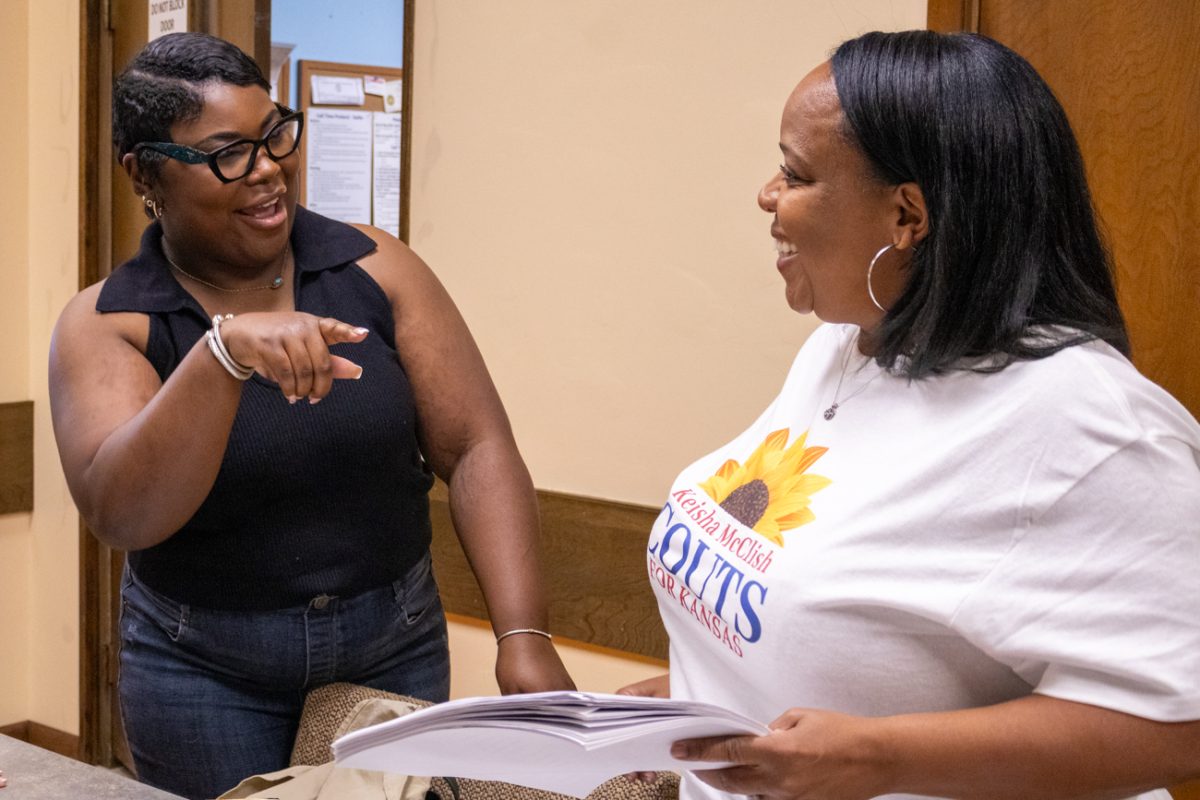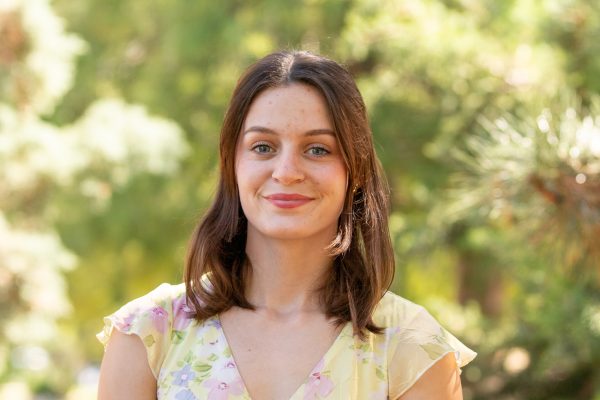For Northwest High School senior Nevaeh Carter, youth engagement in elections is personal. Carter said she is passionate about mental health and suicide prevention and regularly participates in canvassing and community events.
“I had always wanted to get involved in more local political stuff, the problem is that there’s not a whole lot to do, especially as a high school student,” Carter said.
Carter works on Democratic candidate Aonya Kendrick Barnett’s Kansas State House campaign for District 85, with a focus on advocating for issues relating to youth.
“It’s election season so I was looking at local campaigns, and she is a family friend, so I just reached out to her and I saw her at pride,” Carter said. “And she was like, ‘Hey, you want to help me pass stuff out?’ And from there, I started helping out a lot more.”
Carter has a dedication that extends beyond local politics — she advocates for mental health and suicide prevention through the Zero Reasons Why campaign.
Her experiences visiting the Kansas State Capitol through this campaign left her disheartened, as she felt legislators were disengaged from youth advocacy efforts.
“It was just a photo op,” she said. and that it was just a photo opportunity.
Canvassing efforts in both Sedgwick and Butler counties relate to all sorts of topics. For candidates Barnett and Keisha McClish Couts of District 91, these efforts relate to things affecting those areas such as mental health support, Medicaid expansion, funding public education, fair taxation, and more.
Creative Approaches to Canvassing
Volunteers for Couts use various strategies to engage voters, from traditional canvassing to live streaming while knocking on doors.
However, some volunteers, like Cat Butler for Barnett, think that traditional canvassing methods may not always work. Butler, a precinct committee person for District 116, suggests that newer approaches, such as engaging voters at concerts or community events, might be more effective.
“People don’t like their door being knocked on at 7 p.m.,” Butler said. “They will stare at you through their Ring cameras and say nothing.”
Butler is involved in Barnett’s Safe Streets initiative, a nonprofit harm reduction collective that provides resources like Narcan and Plan B. His experience as a former disenfranchised voter drives his belief that volunteers must meet people where they are.
“It feels good to do something for yourself, whether that’s volunteering, voting, or being civically engaged,” Butler said.
Engaging the Next Generation of Voters
As a young person, Carter has a message for older voters.
“A lot of people in Topeka — they feel very entitled to their seat,” Carter said. “I just tell them (voters), even if you don’t vote for us [Barnett], just make it known they are not entitled to their position. They shouldn’t be able to win without going out and reaching out to their voters.”
Carter notes the challenge of being taken seriously as a young person advocating for certain political topics.
“It is not that hard to find information,” Carter said. “I try to tell them [older voters] my experience in being in the capital and meeting with representatives, so it gives me a bit of credibility that I know what I am talking about.”
Despite these challenges, volunteers like Carter remain optimistic. Through direct conversations, whether it be with progressive young voters or older constituents, she finds ways to bridge generational divides.
Barbara Giorgi, a United States Navy veteran and retired teacher and now a volunteer for Couts, believes younger voters are crucial to change.
“What I would like to see is that the youth, more young people get involved,” Giorgi said. “Young people are the ones that, in history, have made change.”




